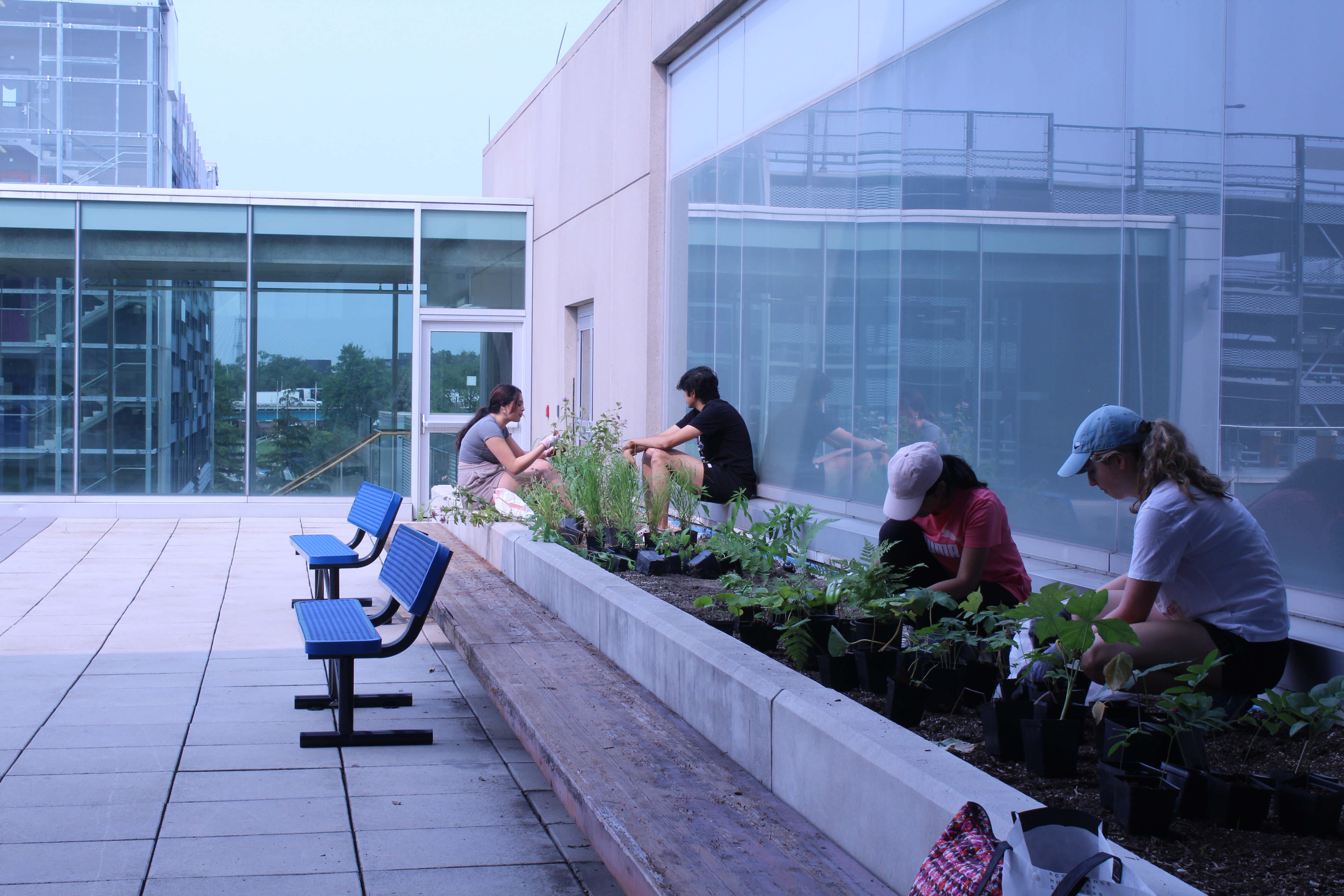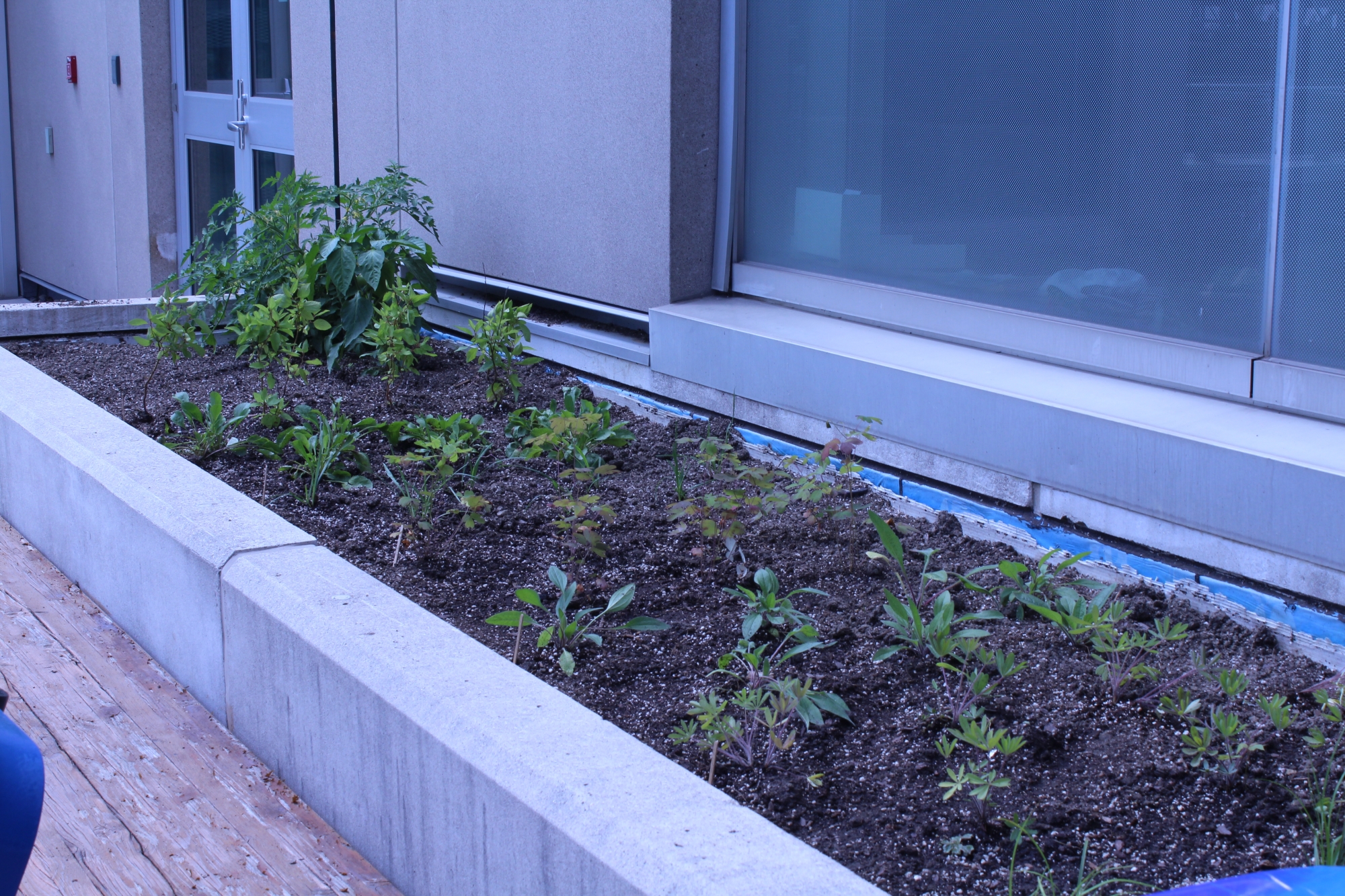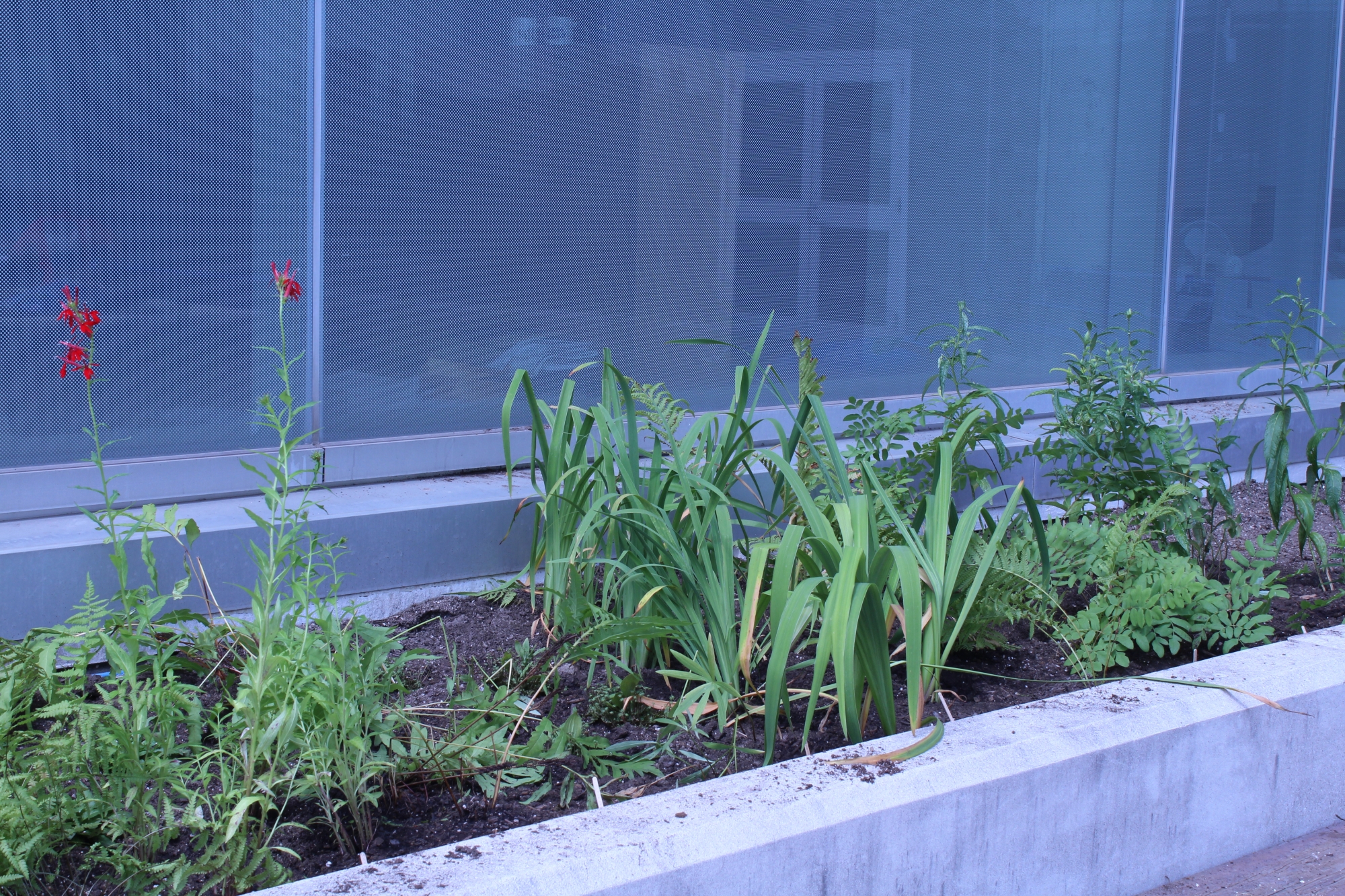
Welcome to our native seed orchard! Held on the rooftop garden on the third floor of the Center for Engineering Innovation, this garden showcases a variety of local species. There are four ecozones highlighting the Prairie, Oak Savanna, Carolinian, and Wetland ecosystems native to this region. Come by and check it out between 8am and 8pm every day the University is open. This project aims to educate, highlight and provide better access to native species, as they are vitally important to the ecosystem.

Learn more about the making of the garden in a video tour.
The University of Windsor sits on the traditional territory of the Three Fires Confederacy of First Nations, which includes the Ojibwa, the Odawa, and the Potawatomi. We respect the longstanding relationships with First Nations people in this place in the 100-mile Windsor-Essex peninsula and the straits – les détroits – of Detroit.
Please go to the How You Can Help page to learn about ways to get involved!

The Prairie Ecozone is characterized by grassland species and less than 10% tree coverage. The featured species are: Canada Wild Rye, Pale Coneflower, Ohio Spiderwort, Wild Bergamot, Switchgrass, Butterfly Milkweed, and Missouri Ironweed. As with any ecozone, Prairie vegetation is strongly influenced by environmental characteristics (moderate precipitation, 700 mm annually) and pedogenesis (the process of soil formation). In this case, glacial retreat provided prairies with silt, clay loam, and fertile soil. Many species in this region are pollinators, so keep an eye out for bees and butterflies!
L'écozone des Prairies est caractérisée par des espèces de prairies et moins de 10 % est couverte d'arbres. Les espèces présentées sont: Élyme du Canada, Échinacée pâle, Tradescantia de l'Ohio, Monarde fistuleuse, Panic érigé, Asclépiade tubéreuse et Vernonie du Missouri. Comme pour tous les écozones, la végétation des Prairies est fortement influencée par les caractéristiques environnementales (les précipitations modérées, 700 mm par an) et la pédogenèse (le processus de formation du sol). Dans ce cas, le retrait glaciaire fourni aux prairies du limon, du loam argileux et un sol fertile. De nombreuses espèces de cette région sont des pollinisateurs, alors gardez un œil sur les abeilles et les papillons!
For more information on individual species, visit the Prairie Ecozone.

The Oak Savanna Ecozone is predominantly grassland with tree coverage of around 25-35%. An important practice in this zone is prescribed burning. Which helps to maintain sustainable growth and reduce the abundance of dry crops. The featured species are: Wild Lupine, Dwarf Blazing star, New Jersey Tea, Balsam Ragwort, Pennsylvania Sedge, Wild Columbine, and Black Eyed Susan. The specific identity of a given Savannah is dictated by the dominant tree species. As its name suggests, an Oak Savannah Ecozone is primarily dominated by oak trees.
L'écozone de la savane à chênes est principalement constituée de prairies avec une couverture arborée d'environ 25 à 35 %. Une pratique importante dans cette zone est le brûlage dirigé. Qui aide à maintenir une croissance durable et à réduire l'abondance des cultures sèches. Les espèces présentées sont: Rudbeckie tardive, Lupin vivace, Dwarf blazing star, New Jersey tea, Balsam ragwort, Carex de Pennsylvanie, et Ancolie du Canada. L'identité spécifique d'une savane donnée est dictée par l'espèce d'arbre dominante. Comme son nom l'indique, une écozone de savane à chênes est principalement dominée par les chênes.
For more information on individual species, visit the Oak Savanna Ecozone.

The Carolinian Ecozone refers to the northernmost deciduous region in Canada. This zone has a temperate climate regulated by the Great Lakes and the mildest winters in Canada. In addition, the region is characterized by high soil fertility and tree cover. The hospitable characteristics of the Carolinian Ecozone makes it home to a third of either rare or threatened species. Featured here are: Canada Mayflower, Wild Ginger, Spinulose Woodfern, Wild Geranium, Bloodroot, Hairy Solomon’s Seal, and Jack-In-The-Pulpit. It is a highly threatened region and the centre of many conservation efforts.
L'écozone carolinienne fait référence à la région de feuillus le plus septentrionale du Canada. Cette zone a un climat tempéré tel régulé par les Grands Lacs et il a les hivers le plus doux au Canada. De plus, la région se caractérise par une fertilité élevée des sols et un couvert arboré. Les caractéristiques hospitalières de l'écozone carolinienne en font le foyer d'un tiers des espèces rares ou menacées. Présentées ici: Maïanthème du Canada, Asaret du Canada, Dryoptère spinuleuse, Géranium Maculée, Sanguinaire du Canada, Sceau-de-Salomon pubescent et Arisème petit- prêcheur. C'est une région très menacée et est au centre de nombreux efforts de conservation.
For more information on individual species, visit the Carolinian Ecozone.

Wetland Ecozones are a highly vulnerable habitat. With less than 30% remaining in Canada, wetland restoration and generation are vitally important for water protection. As its name suggests, wetlands boast a highly wet habitat with portions, seasonally or permanently, resting beneath the water table. Wetlands provide a variety of ecosystem services including aerobic and anaerobic decomposition, runoff filtration, and carbon accumulation. Species that are featured here are: Sensitive Fern, Marsh Fern, Blue Flag Iris, Cardinal Flower, Turtle Head, Ostrich Fern, Michigan Lily, and Royal Fern.
Les écozones de terres humides sont un habitat très vulnérable. Avec moins de 30 % restants au Canada, la restauration et la génération des zones humides sont d'une importance vitale pour la protection de l'eau. Comme son nom l'indique, les zones humides offrent un habitat très humide avec des segments, saisonnier ou permanent, reposant sous la nappe phréatique. Les zones humides fournissent une variété de services pour les écosystèmes, notamment la décomposition aérobie et anaérobie, la filtration des eaux de ruissellement et l'accumulation de carbone. Les espèces présentées ici sont les suivantes: Onoclée sensible, Thélyptère des marais varieté pubescent, Iris versicolore, Lobélie cardinale, Turtlehead, Matteuccie fougère-à-L'Autriche, Lis de Michigan, et Osmonde royale varieté brillante.
For more information on individual species, visit the Wetland Ecozone.
Special thanks to the following groups and people, without whom this project would not be possible:
- Jull Environment Club - Sarah Baker, Kayla Jakobszen, Charlotte Wills, Sarika Sharma, Breanna Stamcoff, and all our wonderful volunteers.
- Dr. Cameron Proctor
- World Wildlife Fund
- Nick and Shawn of Golden Alexanders Native Plant Nursery
